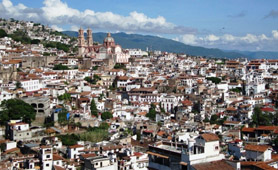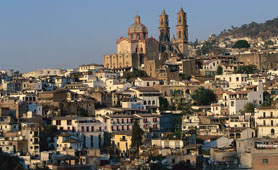Since the 1930s, until today, the making of handcrafts and tourism has played a major role in the state’s economy.
Practically all of Guerrero’s tourism is concentrated within the three municipalities of Acapulco, Zihuatanejo and Taxco, which the state promotes as the Triangle of the Sun or Triángulo del Sol in Spanish.
Acapulco heavily overshadows the other two in pure visitor numbers. The state attracts approximately 290+ million dollars per year of private investment directly into the tourism sector of the economy, with the greater majority invested in Acapulco, Ixtapa and Zihuatanejo.
Additionally, federal tourism agencies invest heavily in the area, primarily in infrastructure, tourism marketing and promotion.
As of Mexico’s oldest and most recognized tourism destinations, Acapulco has some incredible beach resorts which came into fashion during the 1950s as a retreat for Hollywood stars and rich socialites. Acapulco is still famed for its incredible nightlife and still draws millions vacationers from north of the border and around the world. Unlike other destinations such as Cancun, Acapulco is very popular with Mexican nationals also due to its relative proximity to Mexico DF. itself.
The fourth-largest city in the Mexican state of Guerrero is Zihuatanejo. Zihuatanejo is northwest of Acapulco and, as such, has been equally developed as a tourist destination to compliment the more modern tourist resorts of Ixtapa which is a short 5 km away. The difference between Zihuatanejo and its two younger tourism destination brethren is it still maintains traditional Mexican town feel and seems to offer more in the way of Mexican Culture.
The city of Taxco was one of the principal mining areas throughout the colonial period. In contrast to other cities nearby, Taxco has narrow winding streets with no sidewalks, due to its historic location in a narrow ridge on the side of a mountain. Declared a national monument by the Mexican government in 1990, it offers numerous historical buildings dating from the 17th to 19th centuries along with a rich cultural history.




